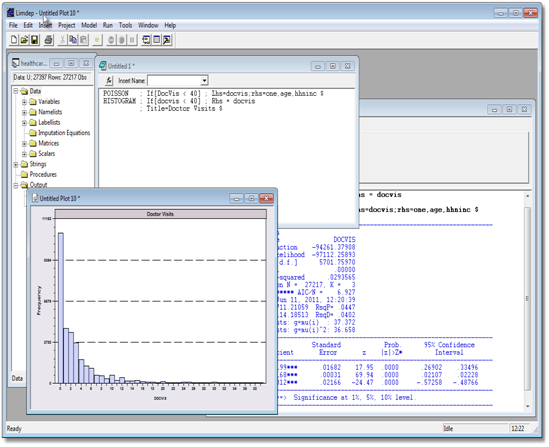Count Data: Poisson Regression & Negative Binomial Models
The Poisson and negative binomial models are the most common frameworks for analyzing count data. LIMDEP supports these and many extensions, including generalizations of the negative binomial model, two part models (hurdle, zero inflation), sample selection models, and many panel data forms including random parameters and latent class models.

Count Data Models
Specifications
- Poisson regression
- Negative binomial: NB1, NB2, NB-P
- Negative binomial with heterogeneity
- Gamma model for over- or underdispersion
- Generalized Poisson and Polya-Aeppli
- Latent heterogeneity - normal or log-gamma
- Hurdle model
- Underreporting
- Box-Cox functional form
- Quantile count data model
- Zero inflation models
- ZIP(tau) and ZINB(tau)
- Covariates ZIP and ZINB
- Zero inflation with endogenous regime
- Sample selection
- Sample selection models, Poisson and negative binomial
- Incidental truncation
- Heterogeneity and underreporting
- Endogenous underreporting
Data features
- Censoring
- Truncation
- Unobserved heterogeneity
Estimation and inference
- Average partial effects and partial effects at means (or other values)
- Fit measures (Pearson and deviance)
- Predictions
- Restrictions and hypothesis - Wald, LR, LM tests
- Overdispersion tests
- Robust covariance matrices: cluster, sandwich
- Tests for hurdle effects
Panel Data Models for Count Data
- Fixed effects
- Conditional and unconditional
- Partial effects
- Predictions
- Random effects
- Log-gamma
- Lognormal
- Random parameters
- Latent class models
- Latent class with zero inflation
- Split population and latent class models

